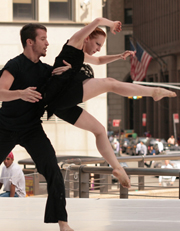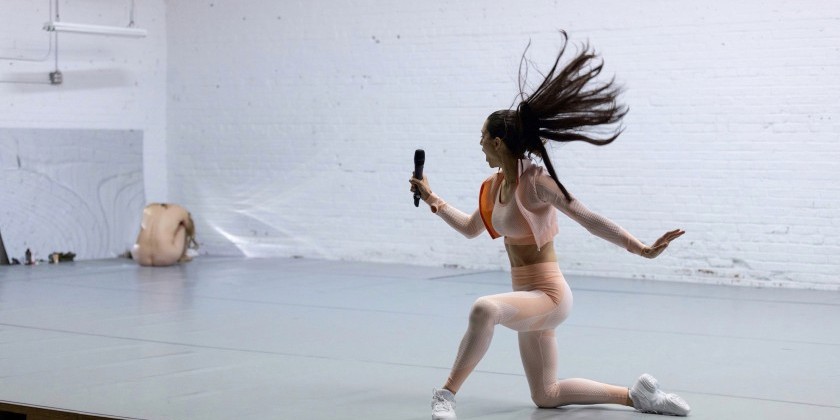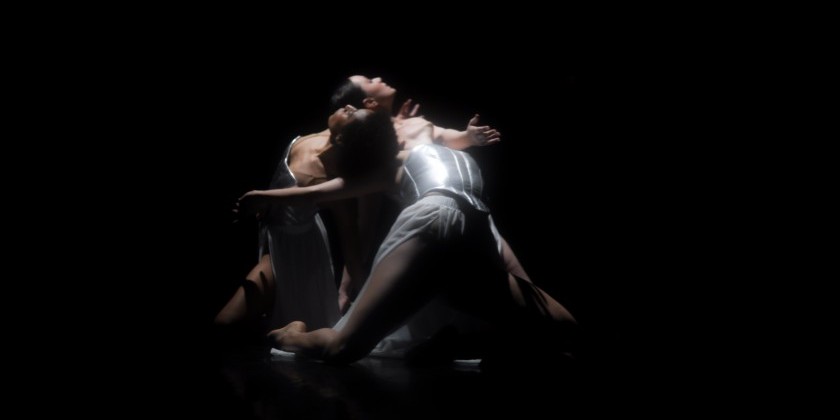MINI-IMPRESSIONS: A NIGHT AT THE AMERICAN DANCE GUILD PERFORMANCE FESTIVAL
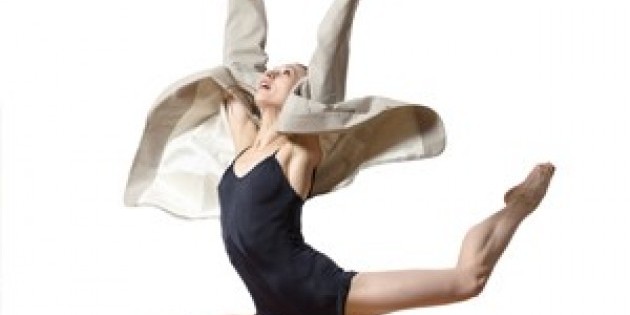
The Dance Enthusiast writer, Elizabeth England shares her IMPRESSIONS of ADG Festival 2011 specifically the Sunday February 27th evening performance.
MINI-IMPRESSIONS OF A NIGHT AT THE AMERICAN DANCE GUILD PERFORMANCE FESTIVAL
ADG FESTIVAL 2011 at Manhattan Movement and Arts Center-Sunday February 27,2011 at 8pm
Choreographers and Their Works: Daniel Charon (Tide), Indah Boyle (Beirut Duet), Anne Bluenthal (Two Short Solos and The Woman Whose Head is on Fire), Sue Bernhard (Liquid Edge), Stephanie Swenson/JLOC Collective (Weighted), Jane Dudley (Harmonica Breakdown), Tina Croll (Secret Landscapes), Betsy Fisher(Hexentanz 1926/1994-Based on the original by Mary Wigman, additional choreography by Fisher) ,and Lane Gifford(Bi-Coastal)
Betsy England for The Dance Enthusiast
Tide
Choreography: Daniel Charon
Music: Philip Glass
Dancer: Daniel Charon
Oftentimes, tap dancing is characterized by tricks and dazzling feats of virtuosity, but Daniel Charon revealed its meditative side. Set to music by Philip Glass, the piece began with Charon in the center of the stage upstage of a rectangular panel. He delicately dipped his left foot into the panel as if stepping into a puddle and began tapping out a rhythm with his feet that complemented that of the repetitive music. While he ventured into other combinations and phrases throughout the piece, he returned to the repetitive initial phrase many times, tying his dancing to the music while remaining independent of it. Before seeing his piece, I would have thought setting a tap piece to Philip Glass’s music a strange choice, and Charon convinced me that it is one of the most natural – and best – pairings.
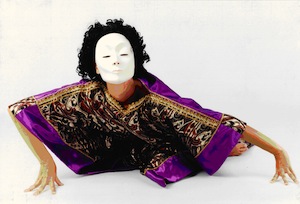 |
| Betsy Fisher in Wigman's Hexentanz (1926/1994) |
Choreography: Indah Boyle
Music: Beirut
Dancers: Abby Geartner, Kyleigh Sackandy
Beirut Duet begins on the floor with stilted, puppet-like movements where the two advanced their bodies from the upstage right corner to downstage left in a series of folding movements. As they slowly gain their feet, their movements become smoother, more lyrical, and less awkward. Other pieces, such as Hexentanz and Harmonica Breakdown, hold a certain place in dance history, and with its puppet-like movements, this piece seemed to hearken back to Petrouchka. Unlike Petrouchka, though, Beirut Duet ends with the dancers finding physical grace and companionship in one another.
Two Short Solos (2008)
Choreography: Anne Bluethenthal
Be Breathed – Text: Anne Bluethenthal The Woman Whose Head is on Fire – Text: Judy Grahn
Music: Anne Carol
Dancer: Anne Bluethenthal
While both of Anne Bluethenthal pieces were notable, Be Breathed in particular was a revelation. Bluethenthal has a private practice in the Alexander Technique, and the piece begins with movements set to her breathing. She begins saying familiar breathing instructions – “breathe more deeply,” “breathe from your diaphragm,” etc. – and then finally stops, faces the audience, and proclaims that she’s tired of people telling her how to breathe. For all its humor, the piece also highlights the cavities in the bodies dancing on stage, most notably the lungs, and it brought a new dimension to the way in which we viewed Bluethenthal’s dancing body and the bodies of the dancers in the pieces to follow.
Liquid Edge
.jpg) |
| Sue Bernhard's Liquid Edge |
Choreography: Sue Bernhard
Music: Nature Sounds, Marcos Balter, Sheila Chandra
Set Design: Sue Bernhard and Matthew Fitzgerald
Dancers: Sadie Gilbertson, Kimberly Machaby, Elisa Schreiber, Nicole Speletic
Sue Bernhard, creates dance “environments” which incorporate elements such as sand, stone, water, paper and leaves. For Liquid Edge, the element of choice was leaves, and as the artists performed modern dance movements, they impassively spread the leaves across the back of the stage, onto each other, and onto themselves. The leaves gradual introduction and invasion set up a tension between the the elements of the natural world and the contrived, “unnatural” space of the stage. At one point, two of the dancers curled up on the floor underneath the foliage, and it seemed that the natural had won.
Choreography: Stephanie Swenson/JLOC Collective
Poetry: written by Anne Sexton , read by Melissa Vischovich
Costumes: Stephanie Swensen
Dancers: Kristel Sterbenz, Lauren Kime
Created in part through the Field’s Artist Residency Program, supported by the Tides Foundation.
Weighted felt like the physicalization of a diary or a therapy session, and appropriately so. Melissa Vischovich repeatedly asked Anne Sexton’s famous question: “Why else keep a journal if not to examine your own filth?” and she referred to a mysterious Dr. Y. The lighting, with the stage completely dark save for a few spotlights, served to heighten the intimacy and introspection of the piece, as did the single wooden chair on stage right. As for the movement, the most effective passages were those that utilized the chair. In one, a dancer sat in the chair with another dancer stretched out before her: the dancer in the chair tapped her prone companion with a foot, sending energy through this performer like a puppet-master. In another moment, one of the dancers sat in the chair and traced large circles on the ground with her right leg, mimicking the circular prison of the spotlight.
Choreography: Jane Dudley
Music: Sonny Terry
Dancer: Sheron Wray
This performance is presented by permission of the Jane Dudley Estate and staged according to standards set forth by the Jane Dudley Estate.
Harmonica Breakdown began with Sheron Wray in the upstage left corner looking for all-the-world like a scarecrow. She seemed to be suspended from her elbows with her head hanging down and to her left, and the image would be one of total lassitude except for the tension in her right heel -- it was slightly raised off the ground, and it twitched, furiously. This one small detail changed the picture from one of relaxation to tense, backbreaking work that was maintained throughout the piece. Various videos of Harmonica Breakdown can be found online, but Wray was particularly impressive in the way she conveyed both the work and the virtuosity of performing the dance. For an interview with Wray about working with Jane Dudley, click here .
Secret Landscapes (excerpt)
Choreography: Tina Croll
Music: Electric Gypsyland, Kali Yerg (traditional music of Armenia)
Costumes: Tina Croll
Costumes: Tina Croll
Dancers: Andrea Gise, Michelle Durante, Alexandra Mount-Campbell, Michelle Gilligan, Alicia McConnell, Carla Reitano
With six dancers, the largest cast of the evening, Secret Landscapes showcased a strong sense of the power of the corps. The dancers- all women- quickly glided across the stage en masse with knees bent and arms held closely to the side. The effect was one of abstraction as the assemblage transcended their individual bodies to form larger shapes sweeping across the stage. Whether creating wide arcs or snapping sharply to the front, they were impeccably together, like a flock of birds forming, dissolving, and re-forming in the sky."...The entire effect, from her flat purple robe with gold trim to her angular mask and thin, bony arms and legs, was that of a terrifying, otherworldly ascetic. Her movements were deliciously sharp..."
"The entire effect, from her flat purple robe with gold trim to her angular mask and thin, bony arms and legs, was that of a terrifying, otherworldly ascetic. Her movements were deliciously sharp."
On Betsy Fisher in Mary Wigman's Hexentanz
On Betsy Fisher in Mary Wigman's Hexentanz
Hexentanz (1926/1994)
Choreography: Based on the original by Mary Wigman, additional choreography by Betsy Fisher
Music: Ernie Provencher
Mask: Michael Harada
Costume: Myrna Reyes
Dancer: Betsy Fisher
Since reading Susan Manning’s Ecstasy and the Demon: The Dances of Mary Wigman , I’ve wanted to see a re-staging of Hexentanz (which translates to “witch dance”), and Betsy Fisher’s performance did not disappoint. Although many passages were memorable, one at the beginning was particularly so. Fisher ,seated at the middle of the stage, faces the audience and reaches down to grab each leg by the ankle. She then proceededs to propel herself ,via her backside, around in a circle lifting each leg and pushing it back down in a mad stomping dance. The entire effect, from her flat purple robe with gold trim to her angular mask and thin, bony arms and legs, was that of a terrifying, otherworldly ascetic. Her movements were deliciously sharp. To see a clips of Mary Wigman performing Hexentanz, click here .
|
||
Choreography: Lane Gifford
Music: J.S. Bach, Daniel Figgis, Phil Kline, Frdric Chopin
Costumes: Lane Gifford
Dancers: Kevin Fay, Mistral Hay, Dave Scarantino, Joshua Tuason, Joy Voelker
Many of the pieces in the program utilized several pieces of music, but none did it as interestingly as Gifford. Instead of ending one piece before beginning another, Gifford layered one on top of the other, finding ways in which the two can co-exist and play off of one another. She made it doubly difficult by using different types of music, including Baroque, avant-garde/ambient electronica, and Romantic. The same ideas were applied to her choreography where the dancers were often split into groups that handed off phrases and refrains between them. The movement style switched from lyrical to sharp with little to no warning, and in one memorable moment, Mistral Hay completed a furious series of steps in a deep, luxurious arabesque penche. From so many disparate parts, Gifford was able to create a coherent whole.





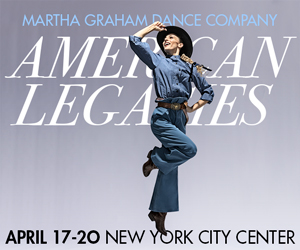

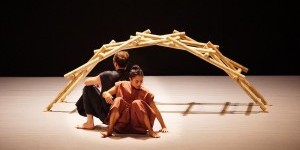

.jpg)
